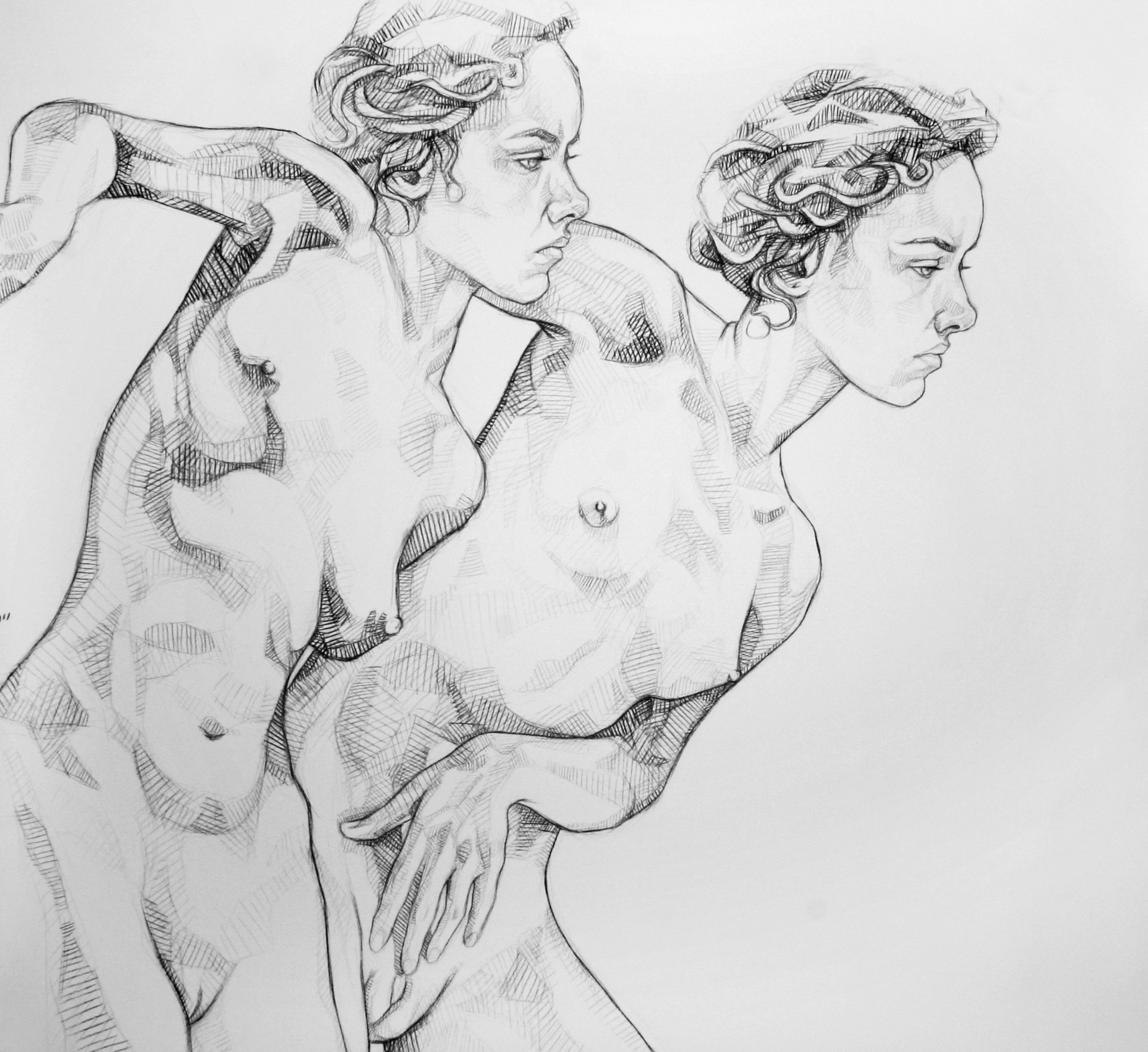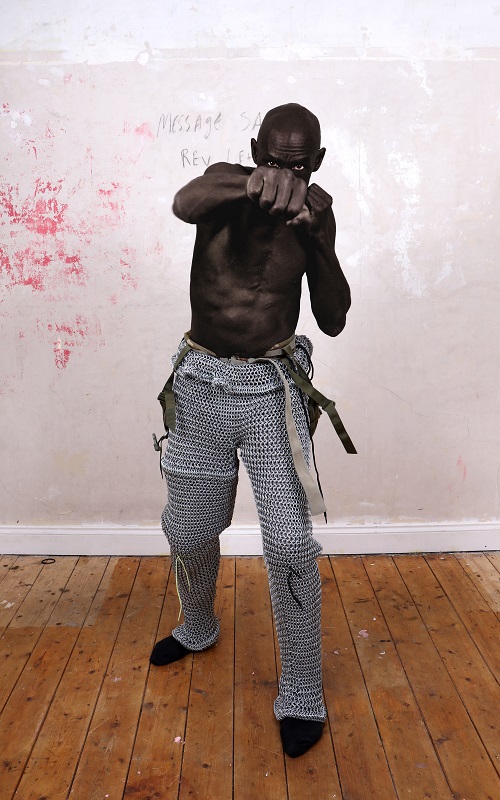Amartey Golding
Amartey Golding was born in London in 1988 and studied Art and Design, 2005-2006, and Architecture, 2007-2010, at Central Saint Martins. During his childhood Amartey’s family moved house regularly, not only to various contrasting communities in London but also overseas to Ghana, West Africa. These experiences of continuous fluidity and movement have undoubtedly influenced Amartey’s artwork. Having to constantly adapt to new environments he often felt as if he himself was not part of the culture, but rather an observer looking in and witnessing scenarios and characteristics from an external point of view.
Amartey is known for his large charcoal drawings on un-primed canvas. The theme of interpreted observations is highly prevalent in Amartey’s work: his pieces do not look to glamorise, nip and tuck or cover the imperfections of his line and subject. Instead his artwork embraces and celebrates the reality of the “impure” as inherent in any honest portrayal.
It is clear that Amartey is intrigued by contradictions. Being of both Scottish and Ghanaian decent, such contradictions are somewhat paralleled by the often conflicting aspects of his mixed race heritage.
Amartey is a multimedia artist who's work explores how contradictory ideas coexist within the individual. By disregarding the lines between life and death, the malevolent and the benevolent, Golding attempts to explore lifes 'parallel truths'. His uses controversial subjects such as sexism, racism and intolerance and places himself comfortably and quite honestly at both ends as oppressor and the oppressed exploring our individual inability to avoid blame or apology.
Amartey's practice makes use of painting, printmaking, writing, sculpture and most recently film. In previous work, his almost exclusive use of black on raw canvas and simple monolithic compositions create stark and quietly dramatic works. In an earlier project, the mythological story of Gabosia, a series of drypoint prints, he creates a darkly comedic, cultural commentary after revisiting the mysterious circumstances around his father’s death. Similarly, in his 15 min film Chainmail, the soundtrack used is a classic of his childhood which holds many nostalgic memories for Amartey. The themes and the content of the song, however, preach the brutal destruction of many of his family and friends.
Amartey’s work has been shown in London, Dubai, Lebanon and Germany and can be found in collections worldwide.






